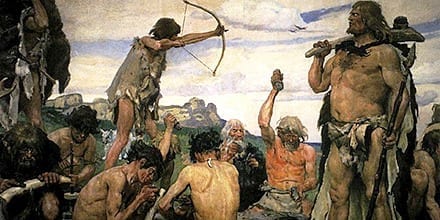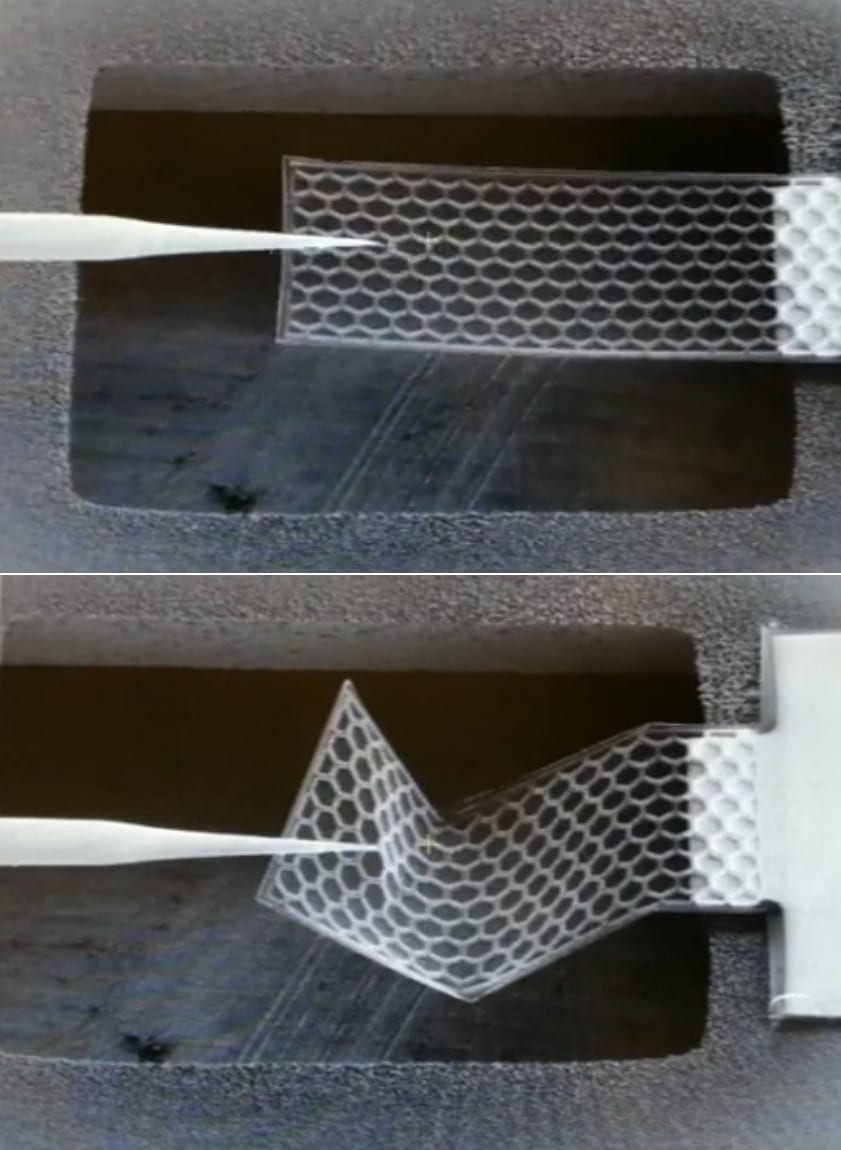
Human beings inherit many genetic traits directly from their parents. However, cultural traits — tools, beliefs and behaviors that are transmitted by learning — can be passed on not only by parents but also teachers and peers. Many animals have learned behaviors, but people are uniquely good at building on existing knowledge to innovate further. This capacity, known as cumulative culture, was captured by Sir Isaac Newton when he said, “If I have seen further, it is by standing on the shoulders of giants.”
We can see evidence of this cumulative culture in the archaeological record; over time, there’s an accelerating increase in the number of tools people use. But the archaeological record reveals another pattern, too: there’s also evidence for large-scale losses of culture. For example, archaeological excavation suggests that Aboriginal populations in Tasmania lost numerous technologies over time, including nets, bone tools and warm clothing, even though these tools might still have been useful.
And it doesn’t seem like cultural accumulation just proceeds through time at a regular pace. The archaeological record shows some evidence of large bursts of innovation occurring after relatively long periods of little change. For example, the early human archaeological record is composed primarily of stone tools for approximately two million years. Then, from about 60,000 to 30,000 years ago, archaeologists find a burst of creative activity, such as burial sites, art forms including cave paintings and statues, and engraved bone and antler tools.
The process of change in the frequency and distribution of cultural traits over time is known as cultural evolution. But what drives it? Why would the inventory of tools expand at some times and diminish at others? These are questions that have intrigued archaeologists for decades. We propose a new model we think addresses some aspects of how cultural evolution happens — and, crucially, it’s based on the idea that not all innovations occur in the same way.
Modeling how culture advances
Since it’s not possible (or ethical) to experimentally manipulate large groups of people, scientists make mathematical models to try to understand how cultural traits evolve. A model of this kind is a set of rules that describe mechanisms that may underlie the process we’re interested in.
For example, a model of cultural evolution could use equations to describe the rate at which individuals invent new things, transmit their knowledge and learn from others. These equations would depend on a number of parameters — things like population size and the rates of invention and learning.
A model can be explored analytically, by calculating what patterns the set of equations predicts, or it could be explored using computer simulations. In our research, we did both.
Most of the models of cultural evolution study the spread of technologies and behaviors that already exist in a population. In our recent PNAS paper, coauthored with Stanford’s Marcus Feldman, we introduce a new model of cultural evolution. What’s different about our model is quite simple: we don’t assume all human innovations are created in the same way.
Watching our model’s predictions unfold
Working with a model is kind of like playing a scientifically minded game of The Sims. On the computer, we simulate a human population of a certain size. We set the rules for a number of interdependent innovation processes to occur at different rates. For example, inventions that can be viewed as “strokes of genius” may be rare, while the invention of tools that are versions of existing ones might be more frequent.
Read more: Why Does Culture Sometimes Evolve via Sudden Bursts of Innovation? A New Model
The Latest on: Cultural Evolution
[google_news title=”” keyword=”Cultural Evolution” num_posts=”10″ blurb_length=”0″ show_thumb=”left”]
via Google News
The Latest on: Cultural Evolution
- Gaming for All: The Rise and Evolution of Video Gameson May 10, 2024 at 4:13 am
Starting off as a niche hobby, video games have now reshaped into a major source of modern entertainment. This dramatic transformation over the years illustrates how impactful these have been, growing ...
- GSU Gullah Geechee Center offers art, history, cultural cross-section of sweetgrass basket sewingon May 10, 2024 at 2:15 am
Last month, columnist Maxine L. Bryant visited the Red Bays community of Andros Island, Bahamas, to study the Gullah Geechee connectivity in basket sewing.
- Charting Charlotte’s graphic design evolution through student projecton May 7, 2024 at 5:00 pm
These projects captured significant local events, offering a glimpse into both cultural evolution and sports history. Singer affirmed the significant impact that designers have on shaping culture and ...
- Bilibili: A Catalyst for Sino-French Cultural Exchangeson May 7, 2024 at 2:03 pm
With the ongoing evolution of the Internet and of social media landscapes, new opportunities for cultural exchanges between China and France have emerged. Bilibili, a leading youth culture community ...
- Catalyzing Creative Cultural Changeon April 12, 2024 at 8:25 am
Together they comprise the continuity component of cultural evolution, ensuring that solutions, artworks, rituals, and so forth with cultural meaning or value are not lost from the society as a ...
- Cultural Evolutionon November 8, 2023 at 8:06 pm
Cultural Evolution The 19th-century idea that cultures evolve in the same way as plants and animals was abandoned when anthropologists found that it did not jibe with their observations. Now the ...
- Cultural Evolutionon August 13, 2023 at 12:36 pm
In this book, Kate Distin proposes a theory of cultural evolution and shows how it can help us to understand the origin and development of human culture. Distin introduces the concept that humans ...
- Kick Game Evolution - NBA sneaker culture in 2019on January 26, 2022 at 11:57 pm
Meet three players who have embraced the sneaker culture evolution. Every week, PJ Tucker spots a pair of sneakers he wants. He'll track down his size 14 -- often within days -- then almost ...
- Why Your Company Culture Is A Lie And What You Can Do About Iton May 26, 2020 at 4:58 am
Culture requires a sense of evolution that’s very different than evolving a way of working by a mandate or a command from above. Culture Requires Transcendence and Transformation Whether ...
- Cultural Evolutionon August 12, 2019 at 9:54 am
Here's what we have this time: Is evolution a "struggle" or "snuggle" for survival? ... Any profound loss, in this case of a father, ripples across our lives like a pebble on a lake. ... Physicians ...
via Bing News









